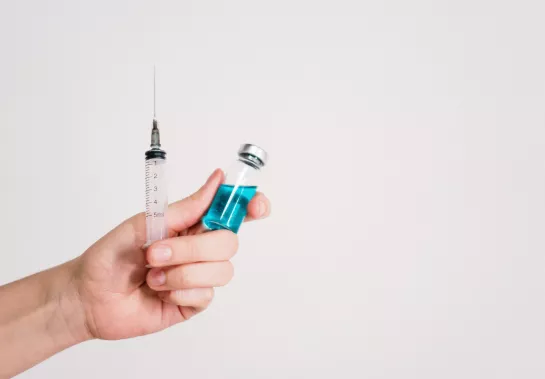Addressing barriers to vaccine hesitancy: a tailored approach

Assistant Professor Catherine Panozzo, PhD, uses large databases to study the comparative uptake, effectiveness, and safety of drugs and vaccines. She is also interested in public health surveillance and interventions. Her latest study, recently published in the Journal of Adolescent Health, included a large web-based randomized controlled trial of mothers with concerns about the vaccine. Study results show a promising avenue for addressing vaccine hesitancy around the HPV vaccine. We spoke with Dr. Panozzo to learn more about the study, what the team learned, and what direction her future HPV vaccine research might take.

Q: First, some background about the HPV vaccine: what can you tell us about the current guidelines around the HPV vaccine, and coverage rates?
A: HPV vaccine coverage is really lagging in pre-teens and young teens, especially when you consider the HPV vaccine coverage level targeted by U.S. cancer prevention goals (80%) as well as the measured coverage levels of other vaccines routinely administered at these ages, including Tdap (87%) and meningococcal (86%) vaccines. The most recent HPV vaccine coverage estimates reveal that only 61% of 13-year-old girls and 64% of 13-year-old boys in the U.S. initiated the vaccine series, with wide variation across states.
Q: Related to low coverage rates in the U.S.—the WHO cites vaccine hesitancy as one of the top ten threats to global health, stressing the need for more work in this area. What does this study add to the current body of work around vaccine hesitancy?
A: Vaccine hesitancy – including concerns about safety and child age – among mothers is a notable barrier to HPV vaccination among U.S. adolescents.
Current recommendations advise providers to use a bundled messaging approach when making the initial recommendation for HPV vaccination to parents and 11-12-year-old adolescents. In this approach, the provider presumes the parent is ready to vaccinate and states that the child is due for all age-appropriate vaccines, including the HPV vaccine. However, this approach does not directly or proactively address parental vaccine hesitancy. Therefore, we conducted a study to examine the effect of supplementing a bundled recommendation with messages tailored to address mothers’ specific concerns about the vaccine.
Q: Can you tell us about how you designed the study, and whether the study results matched your expectations?
A: We conducted a large web-based randomized controlled trial of mothers with concerns about the HPV vaccine, and compared the impact of implementing the current guideline alone and in combination with tailored messages on HPV vaccination intent. These mothers, all of whom did not intend to vaccinate their 11-14 year-old child within the next 12 months, were randomized to one of three groups: a) “control” which watched a bundled recommendation video; b) “top concern” which watched the control video plus a video tailored to their top HPV vaccine concern; or c) “all concerns” which watched the control video plus videos on all of their HPV vaccine concerns. We found that tailored messages addressing all of the specific concerns of vaccine hesitant mothers improved HPV vaccination intent, and tailored messages addressing the top concern marginally improved intent; these improvements were not observed in the control group. These results aligned with our expectations and contribute to the growing body of literature suggesting that tailored recommendations may be essential for improving HPV vaccination acceptance among hesitant parents.
Q: What future studies are you and your team considering to expand on this work?
A: Our team is working to integrate the tailored messaging strategies into a clinical intervention to test whether these improvements in HPV vaccination intent translate to actual improvements in HPV vaccination uptake in primary care settings. We are also just starting to explore whether we can further “tailor the tailored messages” to subgroups of the population who have particularly low HPV vaccine uptake or high incidences of HPV-related cancers.
Q: What are your thoughts on the implementation of tailored messaging into practice?
A: Studies consistently show that a strong provider recommendation is critical to improving HPV vaccine coverage in young adolescents.
However, only 75% of parents who receive an HPV vaccine recommendation from a provider accept it. These data indicate that while a provider recommendation is a strong influence on HPV vaccination uptake, further work is needed to assist providers in effectively addressing parents’ concerns and increasing on-time vaccination. Stay tuned to our future research on how we plan to implement tailored messaging in practice!
Panozzo CA, Head KJ, Kornides ML, Feemster KA, Zimet GD. Tailored Messages Addressing Human Papillomavirus Vaccination Concerns Improves Behavioral Intent Among Mothers: A Randomized Controlled Trial. J Adolesc Health. 2020 Mar 18. pii: S1054-139X(20)30052-5. doi: 10.1016/j.jadohealth.2020.01.024.